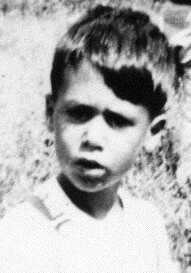Vie de Joel Sloman
The 1970s was the great period of self-examination in my life. I wrote journals and kept a diary, almost all of which bores me to death today. I began by trying to remember everything that happened to me up until the time I began writing it down. Then I tried to explain it to myself. Often, a particular text ended with an inspirational passage. I resolved some sort of confusion, explained enigmatic events, and then concluded that I could move forward, a burden lifted.
My problems were obvious to me. Socially, I was extremely shy and backward. Ordinary tasks, some of which I ought to have enjoyed, like reading a book, overwhelmed me. My attention wandered. I was very afraid, in danger, I thought (like Emily Dickinson?).
I certainly wasn’t taking the “responsibility” of being a poet very seriously. I drifted away from whatever involvement I had had in the literary world.
It was a period of “beginning again,” though hardly consciously or systematically.
A few times, however, I did learn something meaningful about myself. One day I sketched the floor plan of the apartment in which I had lived with my parents and my sister until I was eight and a half years old. It was on the second floor, facing the street, of a 4-storey brick apartment building in Bensonhurst in Brooklyn. It wouldn’t be hard to sketch the neighborhood itself, which is basically a grid.
The apartment consisted of a kitchen, a living room, a bedroom, a hall, and a bathroom. I looked at the sketch in amazement. The apartment was so small! It suffocated me. It made me crave limitless space.
“I’m going to be fifty. It’s high time I knew myself. What have I been? What am I?” Stendhal writes in his Vie de Henry Brulard. So he writes about his youth, beginning with his earliest memories, “far from certain that I have the talent to get myself read. I sometimes find great pleasure in writing, and that’s all.”
But he didn’t only write. He also drew pictures, of rooms, streets, squares, woods, mountains, views, labeled in detail, often lettered like a diagram with an accompanying legend. He claimed that this aided his memory, which, to me, is perfectly credible.
I think of Jack Kerouac and Bernadette Mayer.
My problems were obvious to me. Socially, I was extremely shy and backward. Ordinary tasks, some of which I ought to have enjoyed, like reading a book, overwhelmed me. My attention wandered. I was very afraid, in danger, I thought (like Emily Dickinson?).
I certainly wasn’t taking the “responsibility” of being a poet very seriously. I drifted away from whatever involvement I had had in the literary world.
It was a period of “beginning again,” though hardly consciously or systematically.
A few times, however, I did learn something meaningful about myself. One day I sketched the floor plan of the apartment in which I had lived with my parents and my sister until I was eight and a half years old. It was on the second floor, facing the street, of a 4-storey brick apartment building in Bensonhurst in Brooklyn. It wouldn’t be hard to sketch the neighborhood itself, which is basically a grid.
The apartment consisted of a kitchen, a living room, a bedroom, a hall, and a bathroom. I looked at the sketch in amazement. The apartment was so small! It suffocated me. It made me crave limitless space.
“I’m going to be fifty. It’s high time I knew myself. What have I been? What am I?” Stendhal writes in his Vie de Henry Brulard. So he writes about his youth, beginning with his earliest memories, “far from certain that I have the talent to get myself read. I sometimes find great pleasure in writing, and that’s all.”
But he didn’t only write. He also drew pictures, of rooms, streets, squares, woods, mountains, views, labeled in detail, often lettered like a diagram with an accompanying legend. He claimed that this aided his memory, which, to me, is perfectly credible.
I think of Jack Kerouac and Bernadette Mayer.

